The Normandy D-Day Beaches Private Tour British Sector from Caen provides an immersive exploration of the pivotal sites where British and Commonwealth forces landed during the Allied invasion of Europe in World War II. Visitors can retrace the footsteps of heroic soldiers, pay tribute at the Ranville War Cemetery, and witness the imposing remnants of the German Atlantic Wall defenses. The tour also highlights the critical role played by innovative logistics, such as the Mulberry Harbor, and the courageous actions of airborne troops at Pegasus Bridge. This comprehensive experience offers a poignant connection to the sacrifices made for the liberation of Europe, leaving a lasting impression on all who embark on this historical journey.
Just The Basics
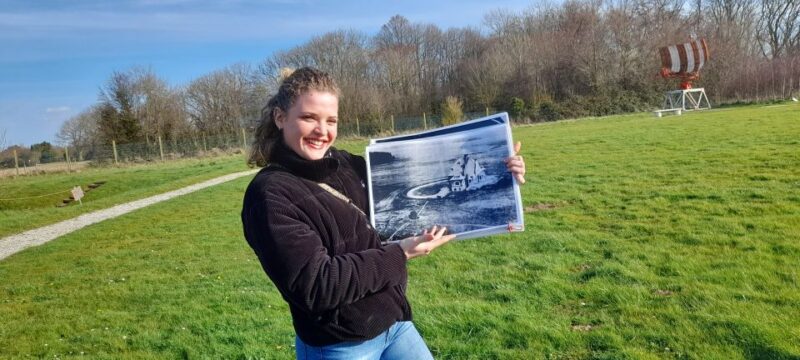
- Tour the Sword and Gold beaches where British and Commonwealth forces landed on D-Day, a pivotal moment in the Allied invasion of Normandy.
- Visit the Ranville War Cemetery, a poignant memorial to the sacrifice of over 2,500 British soldiers during the campaign.
- Explore the remains of the German-built Atlantic Wall fortifications, a tangible reminder of the challenges faced by the Allied troops.
- Discover the legacy of the Commonwealth countries, such as Canada and Australia, whose soldiers fought alongside the British forces.
- Marvel at the engineering feat of the Mulberry B artificial harbor, a crucial logistical hub that enabled the successful Allied invasion.
Main Memorials and Battlefields
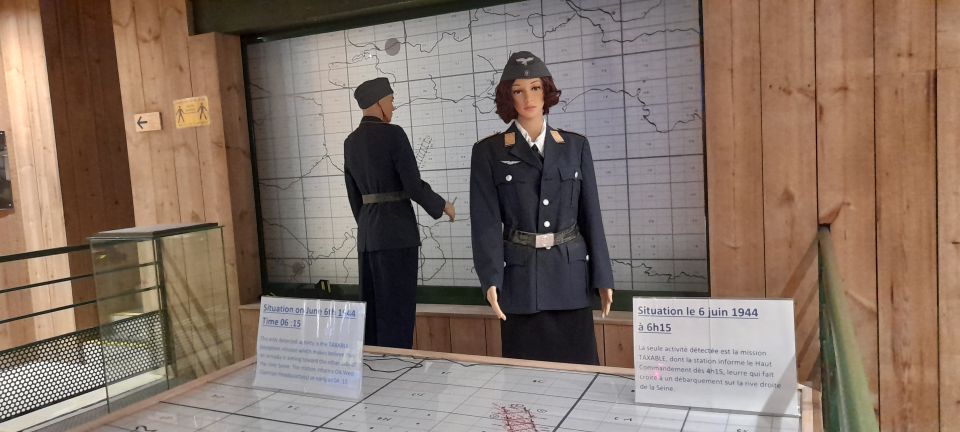
The tour takes visitors to the main memorials and battlefields in the British Sector, including the Sword and Gold beaches where the Allied forces made their historic landings on D-Day.
Highlights include the British cemetery, a tribute to the soldiers who sacrificed their lives. Visitors can also explore the remains of the Atlantic Wall, the Nazi’s fortified coastal defense system.
The tour covers the involvement of other Commonwealth countries, like Canada and Australia, who played a crucial role in the D-Day operations.
Plus, the construction of artificial ports and logistics facilities, such as the Mulberry Harbor at Arromanches, provides insight into the immense scale and planning of the Allied invasion.
Want to keep it personal? More private experiences we love in Caen
Tribute to British Soldiers
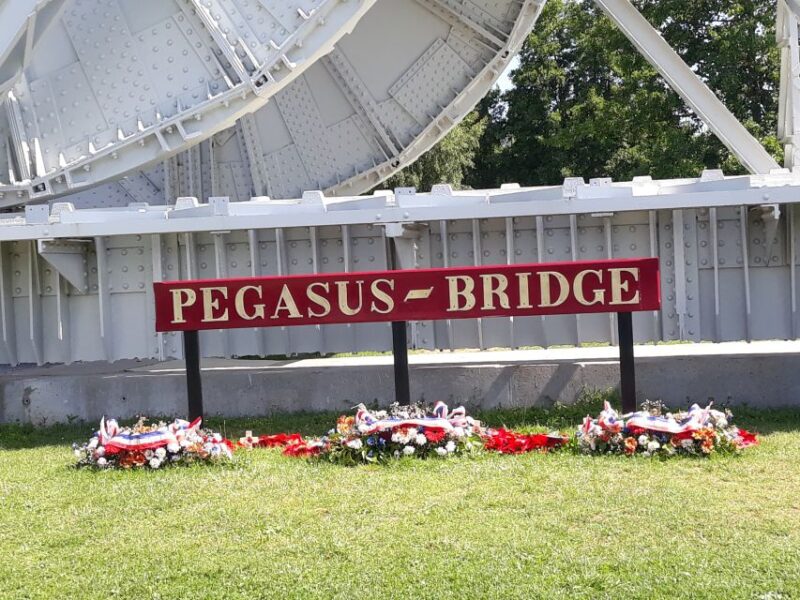
One of the highlights of the tour is the tribute paid to the British soldiers who sacrificed their lives during the D-Day operations.
Visitors can explore the Ranville War Cemetery, which contains the graves of 2,563 British servicemen who perished in the Normandy campaign. The cemetery is a solemn and somber reminder of the tremendous cost of the Allied invasion. Visitors can walk among the rows of pristine white headstones, each one representing a brave young man who gave his life for the liberation of Europe.
The tour also highlights the involvement of other Commonwealth countries, such as Canada and Australia, whose troops fought alongside the British forces.
Atlantic Wall Remains

Along the Normandy coast, visitors can explore the imposing remains of the Atlantic Wall, a massive defensive system constructed by the Germans during World War II to deter an Allied invasion.
These fortifications, including bunkers, gun emplacements, and other structures, provide a tangible connection to the strategic importance of this region during the Normandy campaign.
One of the most significant sites is the Longues-sur-Mer artillery battery, which features four large gun casemates that were used to shell the Allied forces during the D-Day landings.
The ruins of this coastal defense system serve as a stark reminder of the immense challenges faced by the Allied troops as they fought to establish a foothold in northern France.
Commonwealth Involvement
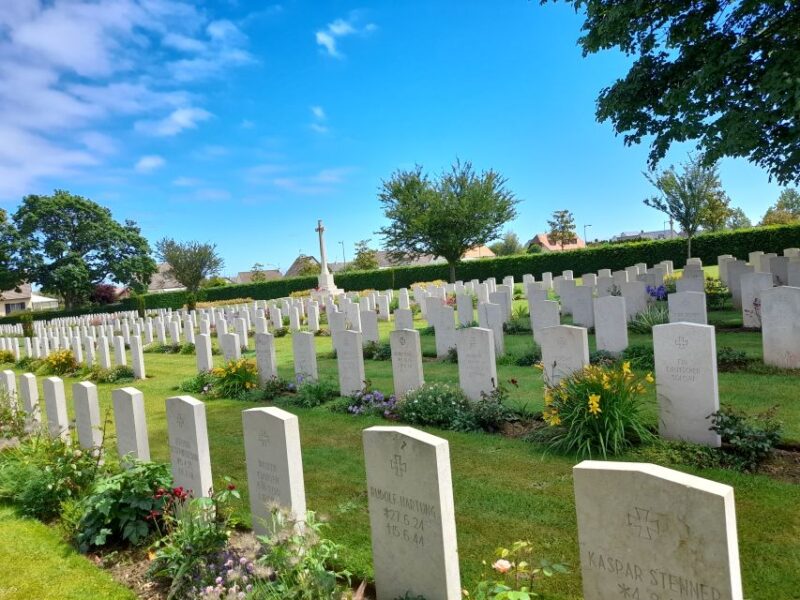
While the British forces were at the forefront of the D-Day landings, several other Commonwealth countries also played crucial roles in the Normandy campaign.
Canadian troops landed on Juno Beach, fighting valiantly to secure their objectives.
Australian and New Zealand soldiers served in the air force and navy, providing crucial air support and naval bombardment.
Soldiers from South Africa, Rhodesia, and other parts of the British Empire fought alongside their British counterparts, facing the same dangers and hardships.
The contributions of these Commonwealth forces were essential to the Allied victory, demonstrating the unified effort and sacrifice that made D-Day a success. Their legacy is honored at the many memorials and cemeteries across the Normandy coastline.
More Great Thing To Do NearbyArtificial Ports and Logistics

The Normandy landings not only required the coordination of immense military forces, but also the construction of innovative artificial ports to facilitate the massive logistical effort. The most notable of these was the artificial harbor at Arromanches, known as Mulberry B. This engineering marvel allowed the Allies to unload over 2.5 million men, 500,000 vehicles, and 4 million tons of supplies in the months following D-Day. The construction of the Mulberry included the use of concrete caissons, pontoons, and an unloading dock, all of which can still be seen today at the site. This innovative approach to logistics was critical to the success of the Allied invasion of Normandy.
| Component | Description |
|---|---|
| Caissons | Concrete structures used as breakwaters |
| Pontoons | Floating platforms to form piers and causeways |
| Unloading Dock | Structure used to offload supplies and equipment from ships |
| Scale | Over 2.5 million men, 500,000 vehicles, and 4 million tons of supplies |
- Normandy D-Day Beaches Private Tour US Sector From Caen
- Normandy: D-Day Beaches Private Tour From Caen or Bayeux
- From Caen or Bayeux: Normandy History Private Full-Day Tour
- Normandy D-Day Beaches Private Tour British Sector From Caen
- Caen: Guided D-Day Sites Tour & Caen Memorial Museum Ticket
- Small Group Guided D-Day Tour and Mémorial De Caen Museum
Operation Deadstick and Bridges

On June 6th, 1944, the 6th Airborne Division conducted Operation Deadstick, a daring mission to capture two key bridges over the Caen Canal and Orne River before the start of the amphibious assault on Sword Beach.
Led by Major John Howard, glider-borne troops silently landed near the Pegasus Bridge and Horsa Bridge, achieving complete surprise. They swiftly overwhelmed the German defenders and secured the bridges, ensuring the British forces could advance inland.
The successful capture of these strategic bridges was a critical early victory on D-Day, allowing the Allies to establish a foothold and reinforce their positions.
A memorial now stands at the Pegasus Bridge site, honoring the brave men of the 6th Airborne Division who carried out this pivotal operation.
Sword Beach Landings
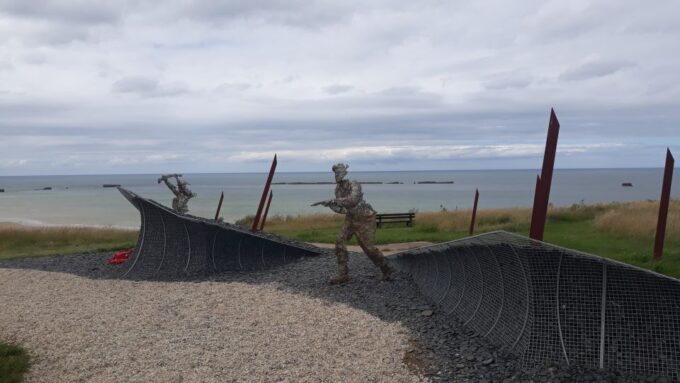
Amidst the chaos of the Normandy invasion, the 3rd British Infantry Division bravely assaulted Sword Beach, becoming one of the first Allied units to establish a beachhead on D-Day.
Supported by naval bombardment, the British soldiers overcame fierce German resistance and pushed inland, securing strategic objectives.
Notably, 177 French soldiers under British commandos were among the first to land at Sword Beach, demonstrating the diverse international effort.
The successful capture of Sword Beach allowed the Allies to advance further into Normandy, paving the way for the liberation of France.
The Sword Beach landings marked a critical milestone in the D-Day operations, showcasing the courage and determination of the British forces.
Gold Beach Landings

Alongside the British forces at Sword Beach, the 50th Infantry Division landed on the adjacent Gold Beach, facing similar challenges of German resistance and treacherous terrain.
The operation at Gold Beach was vital, as it was the site of the artificial port of Arromanches, known as Mulberry B. Here, the Allies constructed a makeshift harbor to offload vital supplies and equipment. Remnants of this engineering marvel, including the Phoenix caissons, unloading dock, and pontoons, can still be seen today.
The Longues-sur-Mer artillery coastal battery also stood in the British sector, posing a threat to the landing forces. Despite the obstacles, the Allies successfully captured Gold Beach, solidifying their foothold in Normandy.
Frequently Asked Questions

What Is the Average Duration of the Tour?
The average duration of the tour is 8 hours. This comprehensive tour covers the main memorials, battlefields, and historical sites in the British sector of the Normandy D-Day landings, providing a thorough exploration of this significant event.
Does the Tour Provide Pickup Service?
The tour provides pickup service. The highlight of the tour is a pickup included from Caen, allowing guests to conveniently access the D-Day beaches and battlefields without needing to provide their own transportation.
Is the Tour Wheelchair Accessible?
The tour is wheelchair accessible, allowing mobility-impaired visitors to explore the historical sites and memorials along the Normandy beaches. This feature ensures an inclusive and accessible experience for all participants.
What Languages Does the Tour Guide Speak?
The tour guide for this D-Day Beaches tour speaks both English and French. They provide live commentary throughout the excursion to ensure all guests can fully understand and engage with the historical sites and information presented.
Is There a Free Cancellation Policy?
The tour offers a free cancellation policy up to 24 hours in advance, allowing customers to change their plans without penalty. This flexible policy provides added convenience and peace of mind for tour participants.
Sum Up
This Normandy D-Day Beaches Private Tour of the British Sector from Caen offers a profound and immersive experience, allowing visitors to honor the sacrifices made by British and Commonwealth forces during the Allied invasion.
From the iconic Sword and Gold beaches to the Ranville War Cemetery, the tour provides a poignant connection to the pivotal events that paved the way for the liberation of Europe.
You can check if your dates are available here:More Private Tours in Caen
- Caen: Pays D’Auge and Honfleur Private Tour
- Caen: Étretat Cliffs Private Guided Tour
- Caen : Private Walking Custom Tour With a Local Guide
- Private Tour: D-Day Beaches From Caen
- Caen: Mont-Saint-Michel and Saint-Malo Private Guided Tour
- Private Day Tour Including Normandy Landing Beaches & Battlefields From Caen
More Tours in Caen
- Private Tour: Rouen, Bayeux, and Falaise Day Trip From Caen
- Private Full-Day Tour of Mont-Saint-Michel From Caen
- Honfleur and Pays Dauge, the Norman Postcard – Private Tour
- The Normandy Landing Beaches – Private Tour
- D-Day Private Tour Omaha + Utah Beach From Caen With Audio Guide
- Caen: Guided Tour of Caen and Bayeux
More Tour Reviews in Caen
- African Village Tours
- 2-Day Private Normandy Tour of The Five Landing Beaches
- Private Tour to Saint Malo and Cancale With Oyster Tasting
- D-Day Private Tour Omaha Beach From Caen With Audio Guide.
- Private Guided Bike Tour of Cabourg and Dives in French
- Private Tour to Bayeux, Honfleur and Pays D Auge From Caen
Not for you? Here's more things to do in Caen we have recnetly reviewed
- Caen: Memorial Museum Entry Ticket & Optional Audio App
- Discover Caen Like Never Before: Guided Tours of History and Secrets!
- Caen or Deauville Food Walking Tour: Enjoy Calvados Flavors
- Best of Caen: Private Walking Tour With a Local
- Normandy: Étretat Cliffs Private Guided Tour
- Normandy: D-Day British and Canadian Sector Guided Tour
- Normandy: Pays D’Auge and Honfleur Private Tour
- Normandy: Mont-Saint-Michel and Saint-Malo Private Shuttle
- Normandy: Explore the Historical Sites of D-Day
- Normandy: Omaha and Arromanches Guided Tour
- Mont Saint Michel : Day Trip From Caen or Bayeux
- Fly Above Normandys Hallowed Coastline in a Private Plane
